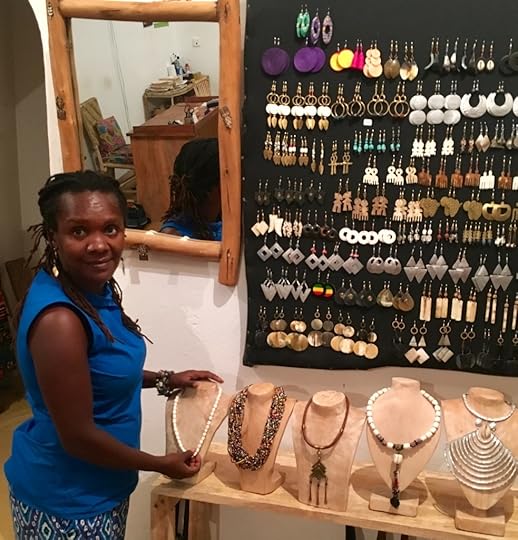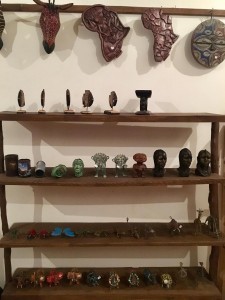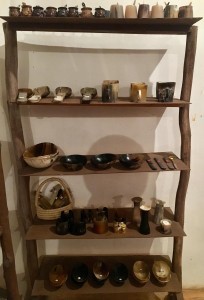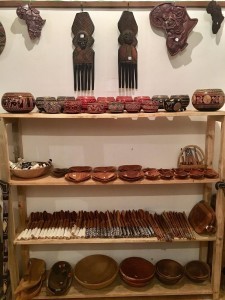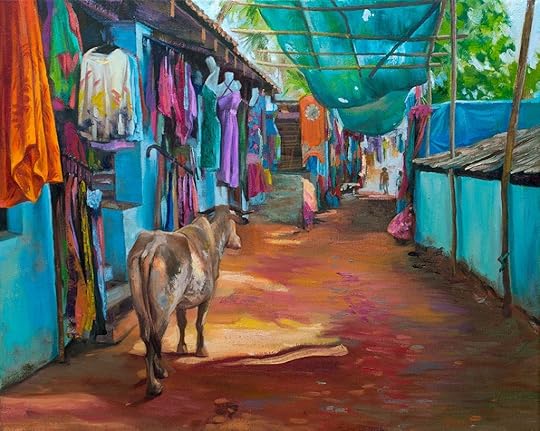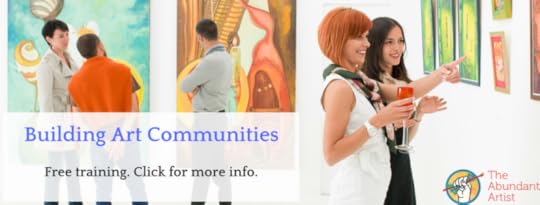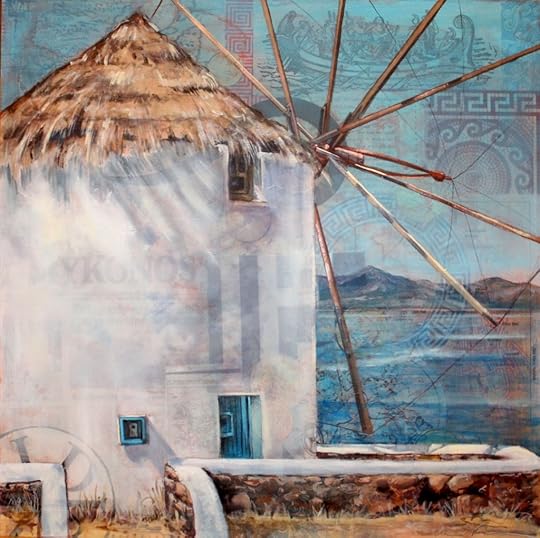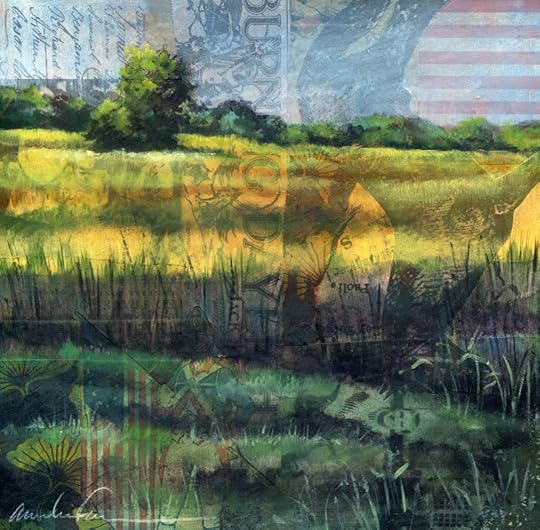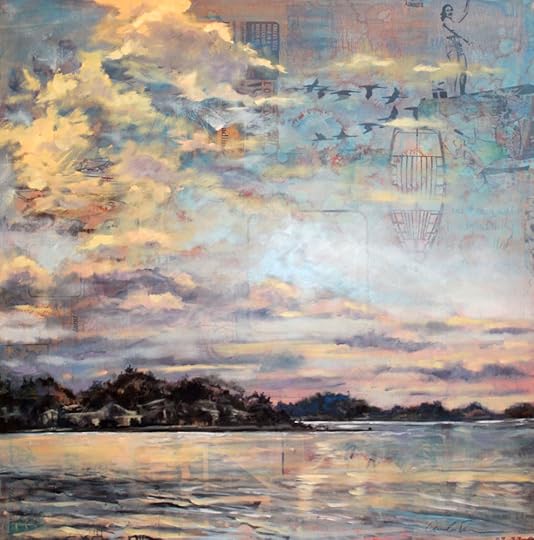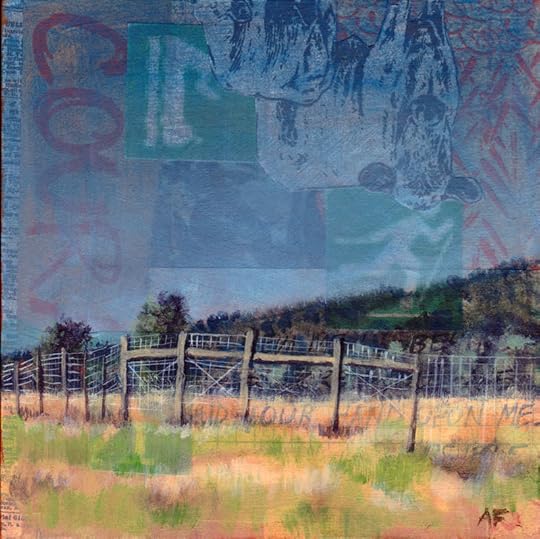Cory Huff's Blog: The Abundant Artist Goodreads blog, page 26
July 31, 2017
Out of Kawangware
“People, in my neighborhood of Nairobi, could not understand why I was making jewelry instead of looking for a job” (Wahu).
Beatrice Nyambura Wahu is the owner of African Corner, an art and craft business, located in Lamu, Kenya. Born in the impoverished neighborhood of Kawangware, Nyambura, as she is fondly called, lived for the day she would leave behind the squalor that is still the living condition of the local residents. With limited access to the stuff of wealth, Nyambura’s vision of a better life seemed a fitting illusion.
Nairobi, the capital of Kenya, is a bustling city that offers few opportunities to its less fortunate citizens. Nonetheless, Kenya is considered the superpower of East Africa. For instance, through a Kenyan initiative, a widely used digital currency called M-Pesa was launched. In addition to this unprecedented technological breakthrough, Kenya, with its island of Lamu, Seaport, and Wildlife, competes with Tanzania for visitors and tourists. Foreign Direct Investment (FDI) from China has financed the construction of a railway that links Nairobi to Mombassa, Kenya’s second largest city.
Nyambura is an artist making a living in Lamu from the craft of her art. She started making jewelry, in her small family house, using beads made locally. As sale of her jewelry increased, the need for a larger work space also became more evident. After carefully thinking on the implication of expanding her business, Nyambura decided to apply for a loan at her local bank. “The loan officer came to my house, I told her here are the sofa, television, and fridge” (Wahu). Lucy, Nyambura’s mother, could not believe the family’s belongings were being used as bank collateral.
Lamu is home to a thriving maritime community, and a favorite destination of local tourists and foreign visitors. In 2001, the United Nations Educational, Scientific and Cultural Organization (UNESCO) designated the Lamu Old Town a World Heritage City. It is on this oasis, in the area of Shela, Nyambura chose to relocate African Corner. Looking back at the start of her business, she says, “Some of my neighbors laughed, they did not think beads are a valuable commodity” (Wahu).
In spite of her success, Nyambura remains committed to social justice. Currently, she is on the Board of Directors of the Twashukuru Nursery School. It must be noted, African Corner is easily accessible from the main land by air, land, and sea. For more information, please visit @AfricanCornerLamu.
June 25, 2017, Lamu, Kenya, Doumafis Lafontant wrote this story for Z Gallery, Boston, Massachusetts.
The post Out of Kawangware appeared first on Online Marketing for Artists.
July 25, 2017
8 Tips for Artists Accepting Commissions
As a self-employed artist, I rely on commissions more so than selling my work in galleries. However, some artists are not great negotiators or business-minded, and art commissions that start off optimistic can sometimes turn into a sour experience. These 8 tips will help you maintain good clients, manage their expectations, and produce work with integrity.
1 – Timing is key. Be responsive and follow up on your leads immediately.
If someone expresses the interest to buy one of your pieces, but can’t make a deposit or payment right away, take down their contact info and follow up with them by the end of the day/event. Most people who buy art don’t “need” it. It’s a luxury item that is often an impulse buy – they fall in love with the art and have to have it. But if you wait too long, the infatuation can fade or even transfer to another item. If the art is intended as a gift, timing is even more important. I learned while working in advertising that no matter how well your product is advertised, if you don’t make the sale at the right time, you’ve missed the chance. But luckily, people are more willing to wait when it comes to art.
2 – Don’t be shy to state your terms.
It’s always wise to have an artist’s agreement signed by both parties to protect you from unwarranted situations. First off, licensing terms should be made clear. Does the client want the right to reproduce the artwork for commercial use/sale? They may think that owning the artwork is the same as owning the license to reproduce it as they see fit. It’s your job to educate them if this is the case. Most artists retain their licensing rights for their work even after a sale. But an unaware client may take your commission and innocently reproduce it on T-shirts or publish it for commercial use without informing you first. That will definitely lead to a sticky situation that could be avoided. Freelance artists may also ask for a “kill fee” — a mandatory fee in case the project is cancelled midway. Kill fees can be 50 – 100% of the project cost, depending on how soon the project is cancelled.
3 – Ask for a payment up front.
It’s fair to ask for as much as 50% up front to cover the cost of your materials and time. Some people prefer 30% down and a couple of installments. I would recommend taking between 30 – 50% up front, unless the commission is for a friend or somebody who has good standing credit with you. For larger commissions, consider a monthly payment plan, where you sent your client monthly progress updates. Making a payment will help both the patron and the artist stay invested in the piece, and build a credible professional relationship.
4 – Know exactly what you’re being asked to do.
Be clear in your descriptions and check in with the client at certain intervals. Remember why the client chose you to begin with, and don’t doubt your ability. DO take creative license — this is why you were hired! DO start with concepts or sketches for them to approve before moving on to costly or large scale work. DON’T check in too often, or seem unsure of yourself or ideas, as this is an open invitation for your patron to suggest their ideas, or perhaps drag you along a creative journey that isn’t your own. They’re just trying to help, but it’s probably doing the opposite.
5 – Cherish your good clients, and learn to manage difficult ones.
Not every commission will go smoothly, but don’t let a few bad experiences ruin the potential for great ones. I’ve had my share of difficult clients, especially when I was an eager and fresh art school graduate. This is a learning curve that will take experience, but here are some cues to watch out for. The good clients will insist on paying you up front, leave a lot of the artistic license to you, and give you a broad spectrum to work with without interfering with your creative process. Hang on to the good clients, as their trust will inspire you to be more creative, resulting in more portfolio pieces, and you’ll love what you do even more. The bad ones will try to dictate how you do things, change their minds after you’ve already started, or micromanage your work — but they insist they’re just trying to help. Good client management skills and educating your client on your process — like what you DO and DON’T need from them in terms of creative input — is crucial to keeping the integrity in your work.
6 – Know your market.
What type of art do you enjoy creating the most? What type of art are you best at? If you market yourself wisely, you’ll end up with commissions you absolutely enjoy. I had trouble deciding for a long time because I enjoy creating in many styles — my work ranges from plein air landscapes and travel memoirs to quirky dark illustrations to colourful portraits. If I had to choose, I do enjoy the illustrations the most, but they take the most time and have a much slimmer market compared to the landscapes and colourful portraits.
7 – Have a method to pricing your work.
This will prevent panic when an opportunity comes up. Most artists price their work based on a per project rate ($ = estimated hours to completion x hourly rate) or based on size ($/sq footage) but that are four variables to keep in mind:
1) Time – Will you be working weekends or long hours? Or can you do this leisurely in a couple of hours? Is it due immediately, or can you take your time?
2) Size – Larger pieces require more paint, materials, handling, shipping costs, etc.
3) Skill Required – Portraits and figurative art generally require more skill than landscapes, so they are priced higher. Is the subject complex, like lace or patterning that requires a lot of detail?
4) Creative Integrity. Will this piece enhance your portfolio, or will you never show it off after it’s complete? Is the project interesting, meaningful, and fun to work on?
8 – Provide a good experience by sharing your process.
The more open and honest you stay with a client, the more positive the experience will be for both parties. Check in periodically, and send them some photos of work in progress, or an enthusiastic update. I can’t stress the enthusiasm enough: YOU are the artist. If you sound excited about your piece, so will the client. If you sound unsure or unconfident, chances are your client will also lose confidence in the project.
Markham artist Stacey MacNevin stresses the importance of not just delivering a painting, but delivering an overall experience. She advises, “Spend the time up front really listening to what a client wants for their piece. They may say: ‘I love your stuff – do whatever you want’ but what they are really asking you for is an experience.” Commissioning an artist should be an interesting, thrilling and enjoyable experience that is rich in conversation and creativity. So take the time to understand your client, listen to their vision, and give them some insight into your creative process. It’s worth the time two-fold: the client will feel more connected to the piece because they are now more connected to your process.
While art commissions can sometimes be an exercise in trial and error, in my experience, these tips make clients happy and allow you to maintain your artistic integrity and creative vision.
ABOUT THE ARTIST
 Fei Lu is a self-employed artist, creative director, and founder of Winged Canvas Art Hub in Markham, Ontario. Her paintings are known to be colourful and provocative with a touch of humor, hinting at a deeper story behind each painting. Her artwork has been published in Applied Arts and American Illustration and in private collections worldwide.
Fei Lu is a self-employed artist, creative director, and founder of Winged Canvas Art Hub in Markham, Ontario. Her paintings are known to be colourful and provocative with a touch of humor, hinting at a deeper story behind each painting. Her artwork has been published in Applied Arts and American Illustration and in private collections worldwide.
The post 8 Tips for Artists Accepting Commissions appeared first on Online Marketing for Artists.
July 24, 2017
TAA Association Health Insurance
As the launch of The Abundant Artist Association gets underway, one of the most common questions we’re getting is about health insurance. Let me give you a brief outline here and explain a few more details.
HOW?
First of all, any group that wants to organize together can access group health insurance. You could grab everyone in your neighborhood and organize together to get group access if you wanted to do so. You just have to have a legitimate reason to be an organization that isn’t just about receiving the insurance.
Why more people don’t do this, I’m not really sure. It might be a matter of not being willing to do the research or handle the admin, but I was surprised when I spoke to my good friend who works in the insurance industry who explained all of this to me.
WHO?
TAA Association’s health insurance is open to anyone in the USA. There may be some states that are excluded (NY, NJ, VT and MN). Most artists living outside the USA have access to a government-sponsored health plan. Association members living outside the USA will have access to all other benefits of the association.
WHAT?
We will be setting up a website with wide range of plan options for Association members. Essentially, you’ll be able to pick from a range of insurance providers, depending on which state you live in, and get access to discounts that grow as the association grows in size.
Obamacare (Affordable Care Act)
Non-Obamacare
Indemnity
Non-ACA plans:
Generally include a PPO network
require underwriting & pre-existing clause
offer cost-savings over non-ACA plans
The risk pool that we are using is used by American Dental, American Bar, and American Medical Associations.
Here’s a screen shot of what one potential plan looks like (your specific plan will vary based on your age/health, but this is an approximation):

WHERE?
After you join the Association, starting September 1, we will have a website where you can go to enroll in these plans. There will also be a phone number you can call for assistance, staffed by insurance professionals.
WHEN?
The Association is open for enrollment now. The insurance portal will be up by September 1, 2017. Depending on your circumstances, you may need to wait until the next open enrollment period begins (currently set as November 1 through December 15 2017) before you can sign up for health insurance.
Insurance is not the sole reason to sign up for TAA Association, but we understand that its a very attractive reason. If you sign up and the insurance options are not to your liking, let us know because we want to make sure that its working for as many members as possible.
The post TAA Association Health Insurance appeared first on Online Marketing for Artists.
July 19, 2017
The Myth of the Successful Solo Artist
There is an idea that permeates the fine art industry that needs to die.
Its the idea of the solo artist who is making millions from their work. We read articles about famous artists in big newspapers and magazines, where certain artists are lauded as heroes for the mighty ideas they’ve brought forth. We eat that narrative up because we all want to have heroes – we all want to believe that we can also succeed through our own efforts alone.
I know that I’m personally guilty of this line of thinking. If I work harder, or if I were a little smarter or more capable, then I could be more successful. Its easier to do it on my own than to train an employee. If I delegate a task to someone else, it won’t be done the way that I want it done, and its more important that it get done my way.
Picasso is a great example of the mythological hero as artist. The commentary is often around how Picasso was a genius, that he was incredibly prolific, and that he was a famously difficult person.
But the truth is that Picasso had an impressive support system built up around him. He grew up with a father who was an art professor, who was supportive enough that Picasso could reportedly draw at a professional level by the time he was 13 years old.
As he grew into an adult, Picasso did spend years struggling through poverty, but as he started pursuing a professional career, he met people who volunteered to help him, including his wives and gallerists, his fellow artists in Paris who offered feedback and adulation (including the wave of American artists who landed in Paris in the 20s and 30s), not to mention the help of Gertrude Stein and her art salons, perhaps the single most important relationship Picasso developed.
But outside of art history circles, how often do you read about those stories? Do you think Picasso would have been as successful as he was without those early supporters?
This situation is repeated over and over again.
From Damien Hirst to Jeff Koons to Georgia O’Keefe and other famous artists – they all had support systems. You’ll see the same thing with the artists we’ve interviewed on the podcast. On your own, you can build a decent living as an artist, but its a life that is limited until you learn how to open up to community and help.
This is why we are creating The Abundant Artist Association. Artists need a community to succeed. If you have a local scene that you’re a part of, that’s great – but do they focus on the things that will make you successful? Too many art scenes are about the parties and the lifestyle, rather than the art-making and the activities necessary to get the word out about your art.
TAA’s Association is built with the intention of helping artists like you:
– meet other artists who are serious about turning their art into a career
– build the skills necessary to be a professional artist (artistic and business)
– find opportunities to show and sell your art
– get access to the kinds of benefits that employees of large companies and unions get, like discounted group health insurance
You can learn more about the Association by watching our training on how to build community here.
What are you doing to build community where you are?
The post The Myth of the Successful Solo Artist appeared first on Online Marketing for Artists.
July 12, 2017
Lessons Learned When my Paintings Went Viral on Boing-Boing
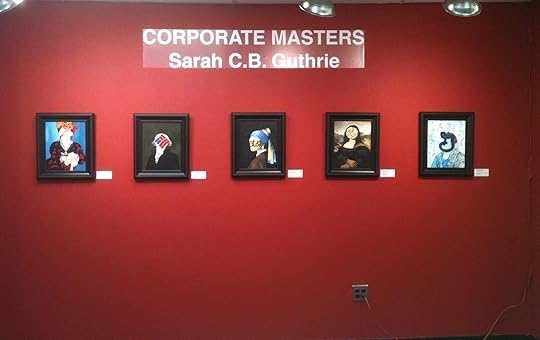
In 2012, images of my Corporate Masters series went globally viral–there were stories about my work written in English, French, Spanish, and Portuguese. How did it happen?
I got Boing Boinged.
Boing Boing is a blog with enormous reach–if your art is shared there, it’s going to be picked up by media outlets world-wide. How I got posted there is one of those classic “you never know what will happen when you put your work out there.”
I painted the first paintings for Corporate Masters in preparation for an exhibit at ARTOMATIC–a month-long art fair in the metro Washington DC area. ARTOMATIC takes over unused office space and, for about a $100 fee, offers spaces for artists to exhibit their work. The fair gets a lot of attention in DC as it is a month long and free to the general public. There are bars, performances, bands, and more that create excitement and engagement around the event and it draws thousands of visitors. It’s a scene and thousands of people go.
Corporate Masters was timely–the election was bringing a lot about Citizens United into focus. Thanks to that infamous Supreme Court ruling, corporations were now considered to be entities in the same way that people are. As an artist, I started thinking what that meant for art making, portraits–what is the face of a corporation, what would a corporate patron commission as a portrait, and that thinking manifested into portraits that replaced famous master works of art with corporate logos. I painted five pieces and created a museum quality installation, complete with dark frames and a red wall.
A couple of weeks into the show, a science fiction writer named Scott Edelman saw my works when he was visiting ARTOMATIC. He liked them so much, he went home and blogged about them and then submitted his images and blog to Boing Boing for their consideration–and sent me an email.
Days later, Cory Doctorow at Boing Boing picked up the story and shared it on the blog–and from there it got picked up by all sorts of media. I started googling to see where the work was being shared–it got picked up by news aggregator sites which stretched the reach to global news outlets. Seeing an article about my work written in Portuguese was the highlight–it was so far removed from my little studio in Virginia.
My top three lessons from this experience:
Put your work out there. You never know when or where that big break, big commission, or big story about your work is going to come from. If it’s not out there, it definitely won’t come, but if it is out there, it has a chance to come.
Be professional in your presentation. I had professionally printed postcards in large supply at my exhibit so it was easy for people to pick up a card with my contact information. My installation was professional in appearance and design–communicating that I was an artist to be taken seriously.
Be ready with your ask. When the break comes, what is your ask? Join my mailing list? Pitching to galleries? More sales? All of the above? At the time my break came, I was just about to move across country, losing studio access for two years. I wasn’t prepared to follow up and pivot quickly to turn this extraordinary opportunity into my next big break. It is a regret that I have, but it’s also one of those “lessons learned the hard way are never forgotten” moments. I’ve spent the past few years building my work and building those systems.
When my next big break comes, I will be ready.
ABOUT THE ARTIST
“As an artist, I have spent twenty years learning what it takes, staying up late, waking up early, to answer this question—how do I make someone come alive when they look at one of my works? So many people are stressed by life’s pressures and my work is designed to delight, restore, and energize, so you can better manage what’s in front of you.” –Sarah C.B. Guthrie
Sarah C.B. Guthrie’s award-winning paintings have exhibited in solo and group shows across the U.S. and her work is collected internationally. Born in London, England, she and parents emigrated to the States when she was a toddler. She holds an MFA in Visual Arts at the Vermont College of Fine Arts, an MA from The George Washington University, and a BA from Davidson College. She and her husband, a retired U.S. Marine, and their rescue dog, Mory, live in Seattle, Washington.
To join her email list and view her work–including her art on-demand series What 3 Colors Bring You Joy?”–go to www.ArtistGu3.com and follow on www.Facebook.com/ArtistGu3 and www.Instagram.com/ArtistGu3.
The post Lessons Learned When my Paintings Went Viral on Boing-Boing appeared first on Online Marketing for Artists.
June 20, 2017
How I Handle Rejection as an Artist
Today was a particularly hard day. I have been courageously applying to shows and public art projects, contacting blog curators, galleries, and pitching press releases for the past four weeks in an effort to break through and find “my audience.” My inbox held not just one, but three rejection notifications to applications I submitted. Gut punch.
You would think that after ten years of receiving rejection emails, it wouldn’t sting quite so much, but it does. Let’s be honest. Someone is telling you that they don’t want what you’re offering and for most of us, we are offering more than just a product, we are offering a part of ourselves.
Rejection is something to be expected as you blaze your artistic trail, but how do you handle it? How do you not let it sink you? Here’s a couple of things I’ve done to help myself through the most recent slew of rejections.
Listen to the conversation in my head. The first sentence in my inner dialogue after reading a rejection letter is, “You’re such a failure.” And if I let it, the dialog gets darker and poisonous. We all talk to ourselves and what we say plays a big part in how we view ourselves and others. I like to catch myself early and ask, “is that really true?” When I ask that question, it stops the flood of exaggerated, emotionally charged thoughts and re-centers me on something much more objective and logical. In most cases, I can say, “no, that’s not true, but here is something that is true: I had the courage to try something. I didn’t get this job or get into this show, but that doesn’t change my value as a person.”
Go do something that brings you life. The worst thing I can do after receiving rejection letters is to go and try to apply for more stuff. I find applying for shows and doing anything related to “selling,” scary and exhausting. Necessary, yes, but exhausting. What I need in this moment is something that brings back some life. That might be going on a run. Having a dance party with my kids or it might be painting. Whatever it is, give yourself permission to do that thing so you can get back on track.
Talk to someone about it. Another thing I tend to do is bottle up the rejection and let it fester. Don’t do that. Find someone to talk to. I share my frustration and hurt with my husband. He is an engineer, so he doesn’t necessarily “get” the whole art thing, but he knows how to comfort me best and that’s what I need in those moments. Comfort and a reminder that I am loved no matter what happens with my art.
Learn from it and try again. Rejection can be a great teacher. Find out who got the show you wanted. What sets him/her apart? Ask questions about why you weren’t chosen. Was it your writing style? Your painting style? Your resume? The more data you can collect, the easier it is to pinpoint what went wrong and grow from that. After many attempts at show and gallery submissions and now, guest blog queries, I’m quickly learning how to fine tune my submissions and direct them to more receptive venues/audiences. I’m learning more about myself, my art, and my collectors. And then the most important part…try again. Use your new found knowledge and try again. Give yourself some time to process the rejection, but don’t just stay there. You might risk more rejection, but you just might meet some success as well.
What have you found to be most helpful in dealing with rejection as an artist?
———————————————————————————————-
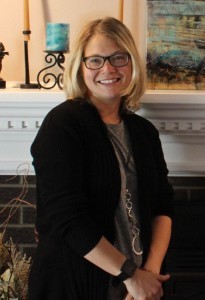 Amelia Furman grew up in rural, central Pennsylvania amidst pastoral scenes of farms, fields, and forests. Nature has captured her attention for as long as she can remember. Visual arts were also a dominant force in Furman’s life from an early age. After graduating with a degree in visual art from Indiana Wesleyan University in 2003, Furman began to explore how she could use paint to express her love of the natural world.
Amelia Furman grew up in rural, central Pennsylvania amidst pastoral scenes of farms, fields, and forests. Nature has captured her attention for as long as she can remember. Visual arts were also a dominant force in Furman’s life from an early age. After graduating with a degree in visual art from Indiana Wesleyan University in 2003, Furman began to explore how she could use paint to express her love of the natural world.
Furman’s background in printmaking and illustration has heavily influenced the direction of her work. She works in a combination of paper collage, text and thin layers of acrylic paint. Using a selection of documents, vintage images, handwritten text, and symbols associated with the painted image, Furman reminds the viewer that places and objects have many layers of meaning, memory, and beauty.
Furman displays her work throughout the United States in traditional and non-traditional venues and her works can be found in private collections nationwide. She resides in Loveland, CO with her husband and two sons.
Artist Statement
Life is about layers creating a whole and my work exudes this same idea.
I have been enamored with creating, problem solving, and the artistic manipulation of materials since childhood. My mother can attest to my intense focus as I would take my everyday surroundings and attempt to turn them into the world I saw so vividly in my mind.
As my artistic vision developed, I felt compelled to deepen my understanding of the multi-layered relationships between places, people, feelings, and objects. Since I function on physical, emotional, mental, and spiritual levels, I feel my artwork should do the same. I strive to understand things in a very holistic fashion, looking at all levels of thought, feeling, and existence.
I work in multiple layers that speak to the various ideas, responses, and even subconscious reactions that a place, person, or object can activate. The subject matter that I choose to paint always has a personal connection, whether it is somewhere I’ve been, someone I know, or something I own. The materials I choose to include in my paintings are often commercial reproductions and publications that are closely connected to the location represented in the image, or found papers and objects around my own home.
I find great joy in bringing a piece to life by creating associations of word, image, color, and texture with the main subject. It’s a process that I have some control over, but I’m always amazed by the final product. Part of the beauty of seeing the completed work is finding things in my paintings that I didn’t know existed before.
The post How I Handle Rejection as an Artist appeared first on Online Marketing for Artists.
June 7, 2017
Discovering and Embracing my Niche
I first heard about the importance of finding a “niche” while listening to The Abundant Artist’s online podcasts in October 2014. I understood what that meant but didn’t know how to find my niche. So I just kept on happily creating artwork, in series (landscapes, trees, flowers, rockwalls, farms, portraits, abstracts – and all in different shapes, sizes and media). As you can see, my artwork looked like a scatter shot!
In Feb 2016 I ventured out of my comfort zone to take Cory’s HTSYAO course. I couldn’t imagine how or even why I should ‘embrace’ this idea of a niche. But, I think that because I had no focus, implementing the concepts of art marketing was more difficult.
As I participated with the TAA Mastermind FB group, I received a lot of encouragement about my work, especially my abstracts. I loved making this textured art the most because, to me, the process was way more creative. But I still felt somewhat isolated and insecure because I didn’t know anyone else who was doing work like mine (creating art with miscellaneous items).
A year and a half later I participated in TAA’s PR and Media challenge, which along with making contacts with people in PR, it required me to search for “my online art market”. As I did this, I found a large community of people who create art from recycled items! This was a real “WOW” moment for me. I also discovered (with the TAA Mastermind’s group help) that this process was called “Upcycling”. Well, I felt like I had found my “family” and that I was actually creating legitimate art. This experience solidified my resolve to continue creating and marketing my textured paintings.
So this is what finding a niche was like. By embracing my niche, I’m in a new place, mentally and have more confidence about my artwork. I can also see that TAA’s marketing strategies will work better for me because I’ve found my “corner of the market”. Although I didn’t see it before, I now know that my art truly has a purpose! I’m creating beautiful things out of refuse, taking what was neglected and despised and causing it to be found and celebrated. I am transforming the Past, for the Future.
So, as a result of Cory’s latest free TAA challenge, look what happened in a week and a half:
• I sent out a solo show proposal and it was well received,
• I started researching and contacting journalists and newspapers,
• I applied to be a featured artist with an online art group,
• I updated my website to be highlight my upcycled art and process,
• I approached my art society to teach a workshop and it was well received, and within a couple months,
• for the first time, a gallery is representing me and my artwork!! Yay, and thank you TAA!
Website: dorothealeblanc.ca
FB: Dorothea LeBlanc Art
IG: dorothealeblanc
——————————————————————————————————
 Dorothea LeBlanc graduated from the University of Guelph with a Fine Art Major in 1980, however health issues kept her away from art until 2007 when improved health and a trip to China sparked her imagination. Her work has been the recipient of various awards at juried shows and she regularly exhibits throughout Nova Scotia, Canada.
Dorothea LeBlanc graduated from the University of Guelph with a Fine Art Major in 1980, however health issues kept her away from art until 2007 when improved health and a trip to China sparked her imagination. Her work has been the recipient of various awards at juried shows and she regularly exhibits throughout Nova Scotia, Canada.
Dorothea LeBlanc’s art is all about creating beautiful things out of refuse … those things that were neglected and despised become found and celebrated by her. She’s devoted to recycling and making art out of it, so her work is always a mixed media project constructed on boards or canvases to create paintings that most often evolve into abstracts, but sometimes appear as landscapes.
Her goal is to encourage everyone to see the value in what might otherwise be thrown away – Reduce, Reuse, Recycle. She is transforming refuse from the past into something beautiful for the future.
The post Discovering and Embracing my Niche appeared first on Online Marketing for Artists.
June 5, 2017
Do Your Beliefs Trip You Up?
A while ago, a friend of mine published a really great book. The cover art was fantastic, the content was well-written, relevant and useful.
As an experienced marketing manager, I saw that a couple of small changes in her title would have made it way more compelling and would attract tons of her perfect clients, but she decided not to do it, because her designer “had already made lots of changes and I don’t want to bother her, or pay for more changes.”
What beliefs sabotaged her?
That, 1. it was “too much trouble” for the designer, and 2. that it would “cost too much.”
As an artist and book designer myself, I can tell you that, yes, it can be a pain to make one more change … but so what? It’s a lot better to get it right before you go to print than to not do it and regret it later.
Regret it she did. Later on, she did a test, using the changes I had suggested. The modified version sold 58% better than the one she had decided not to change. She told me that it cost her more in the long run from lost sales to not do the changes. A huge loss, considering the mere $25 fee she’d have paid to change it.
Don’t allow yourself to be held hostage by limiting thoughts like hers. Grit your teeth and look ahead at the advantages to be gained by making scary decisions, even if it seems to cost more right now.
Know that if you don’t do everything you can to make it so that the people who are meant to find your work … they won’t!
Believe in yourself and your work, know that your art and your message have real value, and that it really is worth every effort to get your creation optimized before you release it to the public eye.
——————————————————————————
 Angela Treat Lyon is a professional artist specializing in stone carving, oil painting and illustration; a best-selling author; host of an inspirational radio show for entrepreneurs; and a Success Mentor for business people.
Angela Treat Lyon is a professional artist specializing in stone carving, oil painting and illustration; a best-selling author; host of an inspirational radio show for entrepreneurs; and a Success Mentor for business people.
You can find her artwork here: AngelaTreatLyonART.com
Selected books here: AngelaTreatLyonBOOKS.com
Her radio show, Daring Dreamers Radio, is at IDareYouRadio.com
The post Do Your Beliefs Trip You Up? appeared first on Online Marketing for Artists.
June 1, 2017
Art Subscription Boxes: Can They Help You Sell More Art?
Subscription boxes are all the rage in the realm of experience gifts. For Christmas 2015, my wife and I gave each other a couple of subscriptions, including candy, chocolates, and makeup.
Several weeks ago, Susan Deneau from ArtBoxSurprise.com reached out to me to ask if I would be willing to do a review. I had seen several art subscription boxes, so I agreed. She sent me a box, and TAA’s team got digging into the world of subscription boxes.
How do Subscription Boxes work?
For prices ranging from $25 – $100, subscribers are are sent art at regular intervals.
Art in a Box features artists from the San Fransisco Bay area. Subscribers fill out a form with their favorite media as well as three adjectives that describe their art taste, and receive a new box during their selected time frame (monthly, quarterly, etc) with a piece of original fine art. Art in a Box has also launched Bronze in a Box, a limited-run art box featuring bronze sculpture from a selected artist.
Subscription Details:
$40/month with local pick-up
$50/month with shipping (3 month subscription required)
Artwork is contained in an 11” x 17” x 3” box
Art Box Surprise branches out from flat media and may include paintings, art shirts, fiber arts, sculptures, and more. Art Box Surprise features independent artists from around the world, and gives $1/box subscriptions to public school art programs.
Subscription Details:
$15/month for an envelope of art cards
$25/month for a mini box
$50/month for a super box
$100/month for a super-duper box
Sizes of artwork are not specified
Papirmass is an art print subscription program that also includes an art card with behind-the-scenes info about the featured artist and a monthly creative card with an art assignment for the subscriber. The latter inclusion makes this box a good gift choice for both art-lovers and artists alike.
Subscription Details:
$8/month for a year-long subscription ($96 billed annually)
$12/month for a quarterly subscription ($36 billed quarterly)
$14/month for a monthly subscription
Discounted rates offered for bulk orders
Art Crate is a curated subscription box that asks new subscribers to take a style quiz before signing up. A professional curator is assigned to each subscriber and works with them personally for the duration of their subscription to build out their art collection. This may include requesting photos of the subscriber’s space. The art print arrives already framed, and subscribers may choose from four subscription options based on the size of their space.
Subscription Details:
$29/month+shipping for a small space (8×8 or 8×10 prints)
$39/month+shipping for “average” spaces (12×16 or 12×12)
$59/month+shipping for large spaces (18×18 or 18×24)
$79/month+shipping for extra large spaces (24×32 or 24×24)
Wonderful Objects is a little different from the more conventional art subscription boxes. They endeavor to craft a storytelling-through-objects experience from the subscription model. They refer to their boxes as Mystery Boxes, and each box is centered around a theme such as joining the circus or finding an underground labyrinth. The kid’s boxes are part of a longer-running story in collaboration with Cricket Media. The subscription includes “teasers”, small pieces sent ahead of the official box. Not everything in the box is an art piece, but art is included.
Subscription Details:
Choose from Kid or Adult subscriptions
$72/quarterly (renews automatically every 3 months)
$135/2 quarter prepay (renews automatically every 6 months)
$252/4 quarter prepay (renews annually)
Art Your Walls is a UK-based art subscription company seeking to make art accessible for everyone. A portion of proceeds are donated to Centrepoint, a UK charity supporting homeless young people. The prints are limited-edition giclée runs and feature a different artist each month. Each box also includes a Certificate of Authenticity and a collectible booklet with information about the artist. Shipping is free throughout the UK; international shipping incurs a small shipping fee (£3.95, roughly $5).
Subscription Details:
£24.95/month (about $32), choose from delivery every 1-3 months
£159.95 (about $206) for 6 months
£284.95 (about $367) for 12 months
Art Mail is another subscription service that utilizes professional curators to hand-select each subscriber’s art. The art featured is museum-quality art on a gallery white mat, Certificate of Authenticity included. They also include a full artist bio and gallery of similar work with each box. Custom framing can be included for an additional $10 billed per piece. Art Mail offers the opportunity to skip a month with no questions asked or extra fees.
Subscription Details:
$49/month billed annually or $55 billed per-piece
$75/every other month billed annually or $85 billed per-piece
$85/quarterly billed annually or $95 billed per-piece
This art subscription is part of a mindful living/philosophy subscription box from Holstee. Each month centers around a different theme and the art is a graphic-design letterpress print available as a physical 5×7″ print or a digital download. Each month includes an origami-inspired gifting envelope to share the art with someone else when it’s time for the next subscription (the idea is focus on the single theme presented each month).
Subscription Details:
$6.40/month billed annually or $8 billed monthly for a digital subscription
$15.20/month billed annually or $19 billed monthly for a digital + physical subscription
Kunst im Brief is a Germany-based art print subscription company that ships worldwide. Boxes feature five curated art prints as well as an in-depth interview with a different up-and-coming artist each month. Subscription types are based on the print size you prefer.
Subscription Details:
€9.95/month ($11.16 USD) for small (A6) prints
€19.95/month ($22.37 USD) for medium (A5) prints
€29.95/month ($33.59 USD) for large (A6) prints
Takeaway Art is a subscription box of original art from Norfolk-based artists. Each month a new artist is chosen and featured on the company’s social media. If subscribers want to receive art from this artist they maintain their subscription; if they would rather not receive art that month they can opt-out. After receiving 9 months of art subscribers can join the Art Swap program to trade in art they no longer want and receive new pieces.
Subscription Details:
£28.50/month billed monthly
£75.00/every 3 months billed quarterly
Occasionally art is limited and new subscribers won’t receive art their first month; they won’t be billed until their art is shipped to them.
Our Southern Hearts is an artisan gift box featuring handmade items (including art, crafts, and food) from Southern small business owners. Shipping is always free, and boxes all have a retail value of at least $45. Past box items are then included in an online shop and can be purchased a la carte.
Subscription Details:
$39.95/month billed monthly
$115/3 months prepaid
$225/6 months prepaid
$445/12 months prepaid
The post Art Subscription Boxes: Can They Help You Sell More Art? appeared first on Online Marketing for Artists.
Selling More Paintings with an Annual Secret Sale
As artists, we’re often told not to discount our work, and I am inclined to agree with that. However there are other ways to offer sales without devaluing your work. Something I tried one year as an experiment was so successful I now do it annually, and I call it the Secret Sale.
I often make paintings that perhaps aren’t part of any specific series, or were created for a course, or are one off experiments that have no ‘place’ amongst my usual work. Usually these are works on paper, which are easier and less expensive to ship.
The key factor of my Secret Sale is that I offer it as pay what you like. You do need to be very clear that you feel ok about anything you include being sold for very little! My rule of thumb is if I’d feel resentful if a piece went for £5 then it doesn’t go in the sale. And actually people are surprisingly generous when allowed to choose the price.
The beauty of the pay what you like arrangement is that it means I sell pieces that most likely otherwise would never have been sold, and the people who purchase them have access to originals by me where otherwise they might not have been able to afford them.
So how does it work in practical terms? I create a secret page on my website with a password, containing an explanation of how it works and a gallery of offered paintings. I mention the upcoming sale a few times in my Artnotes {email newsletters} and on social media, and on the day the sale opens I send an Artnote with the link and password, so that subscribers have first access. After a few days I send a final reminder to subscribers, then remove the password and open the page to a wider audience, sharing it on social media.
The page explains exactly how the sale works; step by step clarity is essential for keeping admin to a minimum! I explain that these paintings are offered as pay what you like because they are outside my usual work, not because I value them any less; and because people can feel awkward I make it very clear that no offer is too low, and I am grateful for all sales.
I ask them to email me the name of the painting, the price, and where they are in the world, so I can work out shipping. I then send them a Paypal invoice, and when it’s paid I remove the painting from the gallery. I pack and ship all the paintings at the end of the week. Lastly, I give a percentage of the income to Kiva, because I like to support other women building their own businesses.
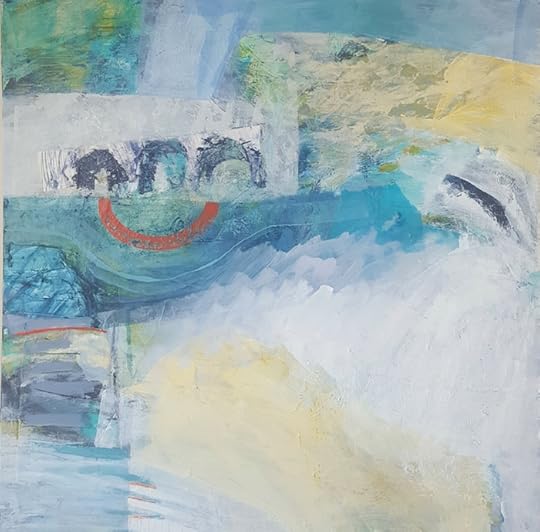
Have you ever offered a sale like this? Would you consider it? If you have any further questions about how I do it please let me know in the comments!
___________________________________________________________________
 Tara Leaver is an artist and online art teacher, working from her attic studio by the sea on the south coast of England. Alongside her painting practice, she teaches online courses focused on helping others uncover and develop their own unique artistic self expression.
Tara Leaver is an artist and online art teacher, working from her attic studio by the sea on the south coast of England. Alongside her painting practice, she teaches online courses focused on helping others uncover and develop their own unique artistic self expression.
website: www.taraleaver.com
instagram: www.instagram.com/taraleaver
The post Selling More Paintings with an Annual Secret Sale appeared first on Online Marketing for Artists.
The Abundant Artist Goodreads blog
- Cory Huff's profile
- 31 followers


